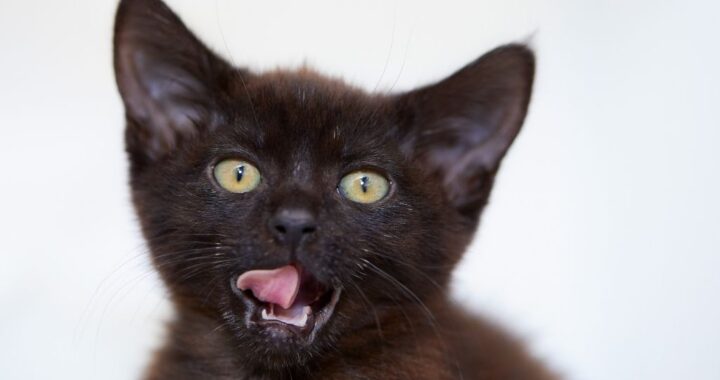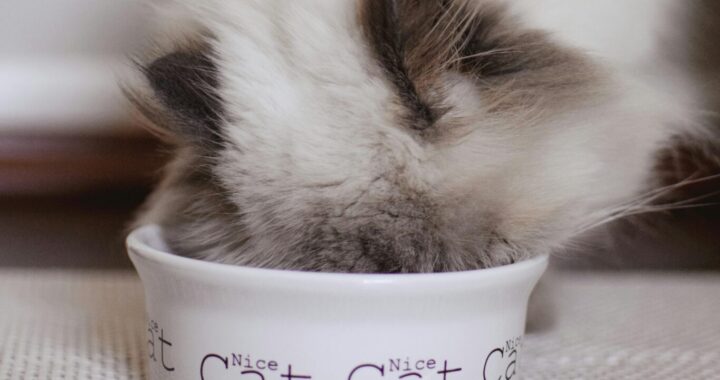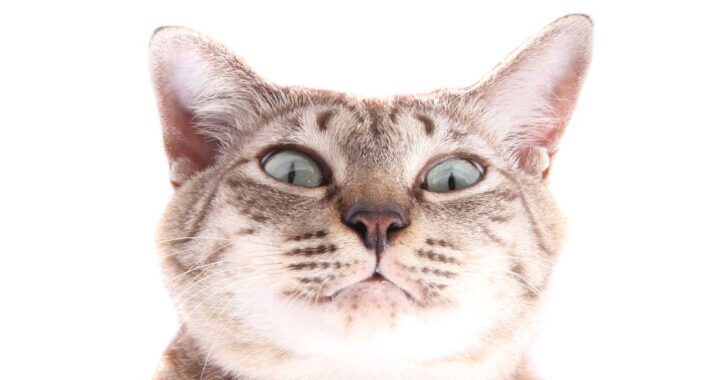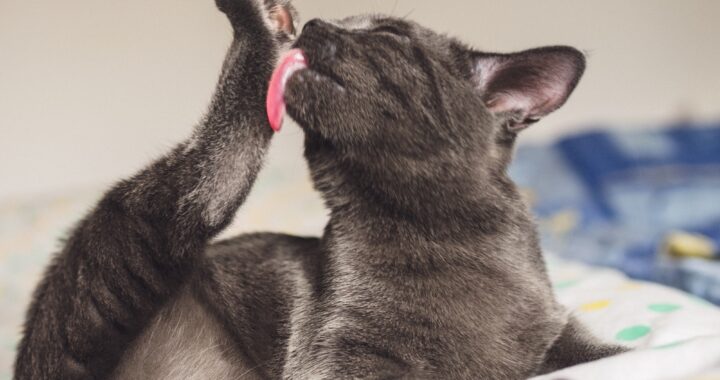Unfortunately, cats can’t talk—at least not very well. And it can be hard for new cat parents to pick up on what their kitty is trying to tell them if they aren’t used to the subtle ways cats communicate and how it contrasts with a dog’s body language. Cats are sometimes stereotyped as stoic and emotionless, but they’re actually very expressive if you know what to look for.
Please note that this guide isn’t comprehensive. It doesn’t cover all the ways a cat communicates, but should be helpful in determining how anxious your cat is feeling at any given time.
Relaxed
“Dis nice.”
A relaxed cat can be resting or actively playing or exploring. If they’re lying down, they’ll be on their side or belly, if they’re standing their spine will be horizontal. If they roll over and show their belly, it’s a sign of trust and they’re likely seeking attention.
| WHAT THEIR BODY IS DOING | WHAT THEIR FACE IS DOING |
| Head: Resting on their body or a surface; still or moving slowly. | Eyes: Closed, squinting or open with pupils at normal size. |
| Legs: Bent if resting, extended if standing. | Ears: Neutral or forward. |
| Tail: Extended or loosely wrapped; up or loosely down if standing. | Whiskers: Neutral or forward. |
What sounds they’re making: None, purring.
Alert
“Wuz dat a noise?!”
An alert cat could be resting or actively exploring. If they’re resting, they’ll likely be on their belly or sitting. If they’re standing or moving, their spine will be horizontal.
| WHAT THEIR BODY IS DOING | WHAT THEIR FACE IS DOING |
| Head: Positioned over the body with some movement. | Eyes: Open normally, pupils normal |
| Legs: Bent if resting, extended if standing. | Ears: Neutral or erected |
| Tail: On body or curved back if resting; up or tense if standing; may be twitching. | Whiskers: Neutral or forward |
What sounds they’re making: None, meowing.
Tense
“The heck?!”
A tense cat could be resting, actively exploring or trying to escape. If they’re resting, they’ll likely be on their belly or sitting. If they’re standing they might “slink” with the back of their body lower than the front.
| WHAT THEIR BODY IS DOING | WHAT THEIR FACE IS DOING |
| Head: Over the body or pressed to the body. Little or no movement. | Eyes: Wide open or pressed together; pupils normal or partially dilated. |
| Legs: Hind legs bent and front legs extended if standing. | Ears: Erected to the front or back. |
| Tail: Close to the body; if standing, tense, downwards or curled forward. May be twitching. | Whiskers: Normal to forward. |
What sounds they’re making: None, meowing, plaintive meowing (complaining).
Anxious
“Imma get outta here.”
An anxious cat will be alert and could be actively trying to escape. Their body will be similar to when they’re tense – on their belly or sitting if resting, and slinking if they’re standing. Their breathing may begin to quicken.
| WHAT THEIR BODY IS DOING | WHAT THEIR FACE IS DOING |
| Head: In a neutral position with little to no movement. | Eyes: Wide open, pupils dilated. |
| Legs: Under their body and bent when standing. | Ears: Partially flattened. |
| Tail: The tip may be moving up and down or side to side. | Whiskers: Neutral, forward or back. |
What sounds they’re making: None, plaintive meowing (complaining), growling, yowling.
Fearful
“Heckin’ heck no.”
A fearful cat will be alert and motionless or crawling. They’ll lie on their belly or crouch directly on top of their paws and may be shaking. If standing, they’ll keep their whole body low to the ground. Their breathing will be fast.
| WHAT THEIR BODY IS DOING | WHAT THEIR FACE IS DOING |
| Head: Near to the surface they’re standing on and motionless. | Eyes: Fully open, pupils dilated. |
| Legs: Bent and near to the surface. | Ears: Fully flattened. |
| Tail: Close to their body. | Whiskers: Back. |
What sounds they’re making: None, plaintive meowing (complaining), growling, yowling.
Terrified
“nope. Nope. NOPE!”
A terrified cat will be mostly motionless and alert. They’ll crouch directly on top of their front paws and arch their spine. The hair on their back and tail will become bushy. Their breathing is fast.
| WHAT THEIR BODY IS DOING | WHAT THEIR FACE IS DOING |
| Head: Lower than the body. | Eyes: Fully open, pupils fully dilated. |
| Legs: Stiff to increase apparent size. | Ears: Fully flattened onto their head. |
| Tail: Close to their body. | Whiskers: Back. |
What sounds they’re making: None, plaintive meowing (complaining), growling, yowling, hissing.
It’s important to remember that every cat is an individual. If you put a little bit of time into observing your cat as they go about their day, it will become easier to gauge their mood based on their body language!




